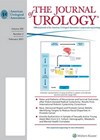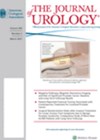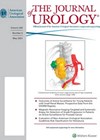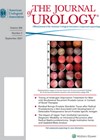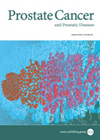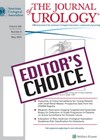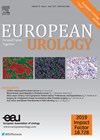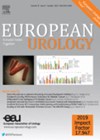
Journal Reviews archive for 2021
Parental psychological intervention improves outcomes for children with night wetting
Bed wetting is a common disorder that can potentially limit social interactions (e.g., sleepovers) and have emotional implications for both the child and their family. Here, Sa et al. from Brazil, hypothesised that involving parents in the treatment and providing...
Inguinal vs. scrotal orchidopexy
Undescended testes occur in 1-3% of newborns; the prevalence is even higher in premature babies. Traditionally the surgical approach has been inguinal orchidopexy, involving two incisions – inguinal and scrotal. In 1989, Bianchi and Squire proposed single scrotal incision orchidopexy...
Active surveillance for small renal masses in younger patients
Active surveillance (AS) is discussed as an option for renal masses <2cm in patients with significant competing risks for mortality. This multicentre data from the US seeks to fill an important gap in current guidelines for provision of this option...
Homo digitalis during COVID-19?
The COVID-19 pandemic has affected all aspects of our lives. We have seen huge changes in the health service, medical practice and hospital working. Many urology meetings – national and international – were cancelled and seminars and courses have become...
Risk factors for BC after minimally invasive RNU
Bladder cancer (BC) after radical nephroureterectomy (RNU) has an approximate incidence of 20-50%. This contemporary multicentre study will inform the ongoing debate on risk factors for BC after minimally invasive RNU and how it may be prevented. Three hundred and...
Urinary tuberculosis and the busy urologist!
This article is a very good read for any busy urologist. When in medical school, we were taught that tuberculosis (TB) was rare in the UK and other developed countries. We have come full circle; now there are increasing cases...
Increased use of active surveillance for men with intermediate risk prostate cancer
The optimal management of men with intermediate risk prostate cancer remains unclear and continues to be debated. The authors interrogate the US National Cancer Database for 176,122 men diagnosed with intermediate risk prostate cancer between 2010 and 2016. Of these...
The importance of assessing frailty in patients prior to radical prostatectomy
This large-scale retrospective study evaluated the short-term postoperative outcomes in patients with localised prostate cancer treated with radical prostatectomy (RP). Both body mass index (BMI) and Charlson comorbidity Index (CCI) are well established indicators of adverse outcomes post major surgery,...
Cardiac failure and medical therapy for LUTS / BPH
Alpha blockers (AB), 5-alpha reductase inhibitors (5-ARI) and combination therapy are widely prescribed for lower urinary tract symptoms (LUTS) considered consequent to prostatic enlargement and are the mainstay of first-line therapy. This retrospective interrogation of a large population-based dataset of...
Male LUTS: where do we stand?
Patients’ preferences and expectations depend on cultural, geographical, economic and national factors. Data from different countries should be interpreted with caution when applied to the individual patient. Patients rarely seek help for benign prostatic obstruction (BPO) unless urinary retention occurs,...
‘Born in the USA’ – neonatal circumcision
In 2006, the British Association of Paediatric Urologists (BAPU) published a statement paper on the management of foreskin conditions (www.baps.org.uk/resources/management-foreskin-conditions). Non-therapeutic circumcisions (those to comply with religious or cultural practices) are not uniformly available on the NHS. Circumcisions for medical...
Urinary frequency and COVID-19: is there a missing link?
The current COVID pandemic has been a worldwide challenge for over a year. It can affect an individual in various ways. According to the World Health Organization, the classical signs are dry cough, fever and shortness of breath. In addition,...

